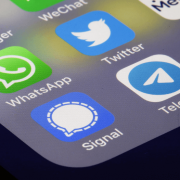The sinking feeling of realizing you’ve lost important data on your phone is all too familiar. Whether it’s precious photos, essential contacts, or important documents, losing data can be stressful. But before you resign yourself to the worst, there are steps you can take to try and recover lost data on your Android or iOS device.
This guide will walk you through several methods you can try, depending on the type of data you lost and how it happened. It’s important to act quickly, as the chances of retrieve lost data decrease the longer you wait.
Also Read: How to Access Archived or Deleted Emails
Step 1: Stop Using Your Phone
This might seem counterintuitive, but the first thing you should do after realizing you’ve lost data is to stop using your phone. The more you use your phone, the greater the chance that new data will be written over the lost data, making it permanently unrecoverable. This includes activities like taking new photos, downloading new apps, or browsing the internet.
Step 2: Check for Backups
The best way to recover lost data is from a backup. Many phones come with built-in backup features, or you might be using a third-party cloud storage service for backups.
Android:
- Google Drive: Most Android phones automatically back up some data, such as contacts, photos, and calendar events, to Google Drive. To check if your data is backed up:
- Open the Google Drive app on your phone.
- Look for folders named “Contacts,” “Photos,” or “Calendar.”
- If your data is there, you can restore it to your new phone by signing in with your Google account during setup.
- Manufacturer Backups: Some Android phone manufacturers offer their own backup solutions. Check your phone’s settings to see if there’s a backup option available.
iOS:
- iCloud: iPhones automatically back up to iCloud when connected to Wi-Fi and plugged into power. To check if your data is backed up:
- Go to Settings > Apple ID > iCloud.
- You’ll see a list of data types that are backed up to iCloud.
- If your data is there, you can restore it to your new iPhone during setup by signing in with your Apple ID.
Step 3: Utilize Data Recovery Software (For Advanced Users)
There are data recovery software programs available for both Android and iOS that can potentially recover lost data from your phone’s internal storage. However, it’s important to note that:
- Success is not guaranteed: Data recovery software isn’t always successful, especially if the data has been overwritten by new data.
- Technical knowledge might be required: Some data recovery software programs can be complex to use and require some technical knowledge.
- Beware of unreliable software: There are many data recovery software options available, but some might be unreliable or even contain malware. Make sure you choose a reputable program from a trusted source.
If you decide to try data recovery software, be sure to do your research and choose a reputable program. There are also data recovery services available from professional companies, but these can be expensive.
Step 4: Recover Recently Deleted Photos and Videos (Android Only)
Android phones with certain versions of the operating system have a built-in feature called “Trash” for photos and videos. This feature allows you to recover photos and videos that you’ve recently deleted. To access the Trash:
-
- Open the Gallery app on your phone.
- Look for a folder named “Trash” or “Recently Deleted.”
- If your photos and videos are there, you can select them and choose “Restore” to bring them back.
Step 5: Contact App Developers
If you’ve lost data from a specific app, such as chat messages or game progress, you can try contacting the app developer. Some developers offer ways to recover lost data, but this will vary depending on the app.
Step 6: Prevent Future Data Loss
The best way to deal with data loss is to prevent it from happening in the first place. Here are some tips:
- Enable Automatic Backups: As mentioned earlier, having a backup of your data is the best way to ensure you can recover it if something goes wrong. Make sure to enable automatic backups on your phone to a reliable cloud storage service.
- Use a Bookmark Manager: For important websites you visit frequently, consider using a bookmark manager to save them for future reference.
- Be Mindful of Storage Space: Regularly check your phone’s storage space and delete unnecessary files to avoid running out of space.
- Consider Upgrading Storage: If your phone is constantly running low on storage space, consider upgrading to a phone with more storage capacity. This will give you more breathing room and reduce the risk of data being overwritten due to lack of space.
- Use a Rugged Case: Accidents happen, and a sturdy phone case can help protect your phone from physical damage that could lead to data loss.
Conclusion
Losing data on your phone can be a frustrating experience, but hopefully, this guide has equipped you with the knowledge and steps you can take to try and recover it. Remember, acting quickly and having a backup in place is crucial for successful data recovery. By following these tips and taking preventative measures, you can minimize the risk of data loss and keep your valuable information safe on your Android or iOS device.
Disclaimer: This information is for educational purposes only and does not guarantee the recovery of lost data.






















[…] Also Read: How to Retrieve Lost Data on Android/iOS […]